Things You'll Need
Soft cloth or paper towel
Nonabrasive cooktop cleaner
Cooktop scraper or razor-blade scraper
Oven mitts
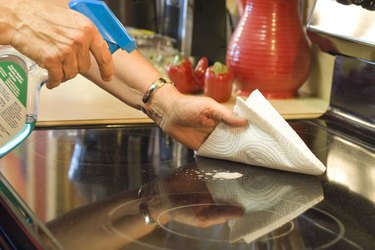
A dirty ceramic cooktop in an otherwise gleaming kitchen is about as visually unpleasant as mud splatter on your best shoes. Eyes drift over clean appliances or spotless surfaces, which make the kitchen appear well maintained. But drips, splatter and rings of burned-on foods are practically inevitable on stoves. Sugary spills, such as jams, syrups and fruits, and even certain cookware, including aluminum pans, can leave stubborn stains or marks on such stoves. Regardless of whether you're wiping it clean after regular use or trying to remove stuck-on grime, getting the ceramic clean isn't necessarily difficult.
Step 1
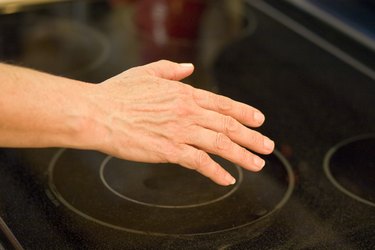
Check that all of the cooktop's elements are off. Allow the cooktop to cool if you used it recently.
Video of the Day
Step 2
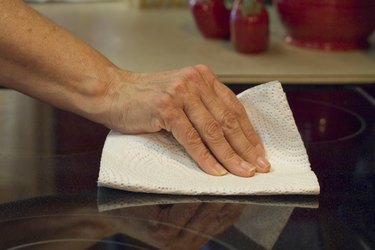
Wipe the ceramic surface with a damp, soft cloth or paper towel.
Step 3
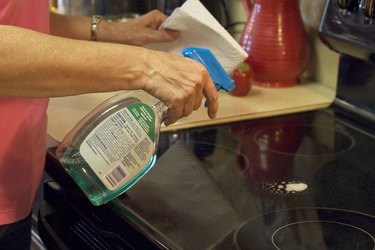
Rub off any remaining spills or marks, using a nonabrasive cooktop-cleaning product and damp paper towel.
Step 4
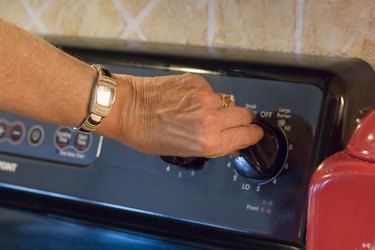
Scrape off any stubborn cooked-on food or marks, such as high-sugar-content spills, using a cooktop scraper or razor-blade scraper, and just enough pressure to lift the food without scratching the stove top. If the scraper is ineffective, turn on the stove element in the spill area for just long enough -- 10 seconds or so, depending on the appliance -- to warm the stuck-on food. Turn off the element. Put on oven mitts to protect your hands. Scrape off the spill while the element is still warm.
Step 5
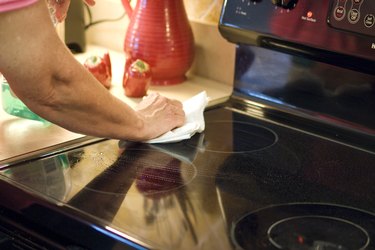
Wipe the stove with a damp cloth or paper towel to remove food particles and cleaner residue.
Step 6
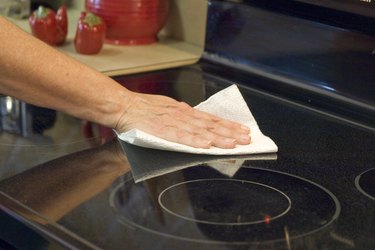
Dry the cooktop to leave it streak-free, using a paper towel.
Warning
Do not use steel wool, abrasive powder cleansers, bleach, rust remover or ammonia on a ceramic cooktop, to avoid damage.
Sugary spills can cause pitting; clean them from the ceramic cooktop as soon as possible, preferably before they cool.
Video of the Day